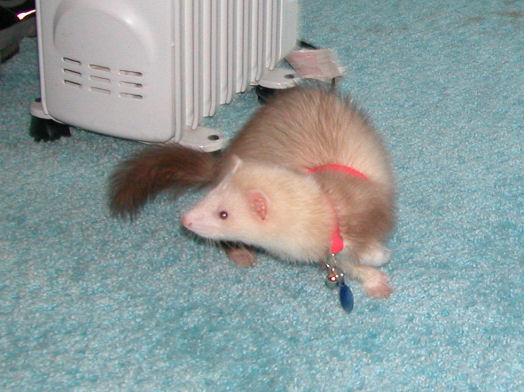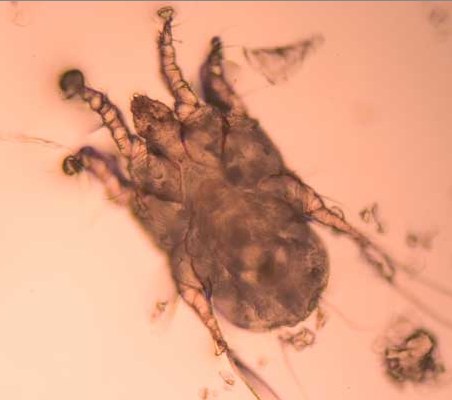Balls and Walnuts
more than you ever wanted to know
- About
- All Change
- Big pix
- Dormies
- Ear, Nose, Throat, and Soul
- Heaven on Earth
- Karen’s memoriam . . . booklet and eulogy
- Lyvvie’s email
- Magic Schoolbus does your nose and throat
- Nest: scene one
- Sex and the Single Wendigo
- Sprouts
- The Mechanic
- Two Birds, One Stone
- Excerpt: Gator and Shark Save the World
My most challenging patient
As any pediatrician will tell you, the scary thing about infants and toddlers is how fast they can go down the tubes. Humans are complex systems held in check by a variety of buffers and homeostatic feedback loops (there! four years of med school in 16 words), and the smaller the human, the more delicate those buffers and feedback loops. It doesn’t take much to go from eating-drinking-pooping to starving-dehydrated-feverish when you only weigh eight pounds.
How much worse, then, to weigh a fraction of a pound?
This week, our ferret Buehler (named by DCR in this contest, and pictured below — as a much younger weasel) went from eating-drinking-pooping to starving-dehydrated-feverish overnight. I noticed the problem in the morning, and by the time I got home in the afternoon, he looked moribund. We lost Buehler’s pal Harmonica last year, possibly because I underestimated how fast these little guys can plunge. And Harmonica only had an eye infection, whereas Buehler looked much, much worse.

I dithered on the question of taking him to the vet. He looked hopeless. He lay motionless in my arms, breathing fast, hot as a poker. I was able to get him to drink some water, but not much, and he wouldn’t take any food.
My only glimmer of hope came when I noticed that he held his head right-ear-down, and when I put him on the carpet, he moved in clockwise circles. I’d done research on dizzy mice back in the 90s, so I recognized this as an inner ear problem. (I’d like to think that I would have figured this out even if I’d been a urologist, but you never know.) Perhaps if this were just an ear infection, Buehler could take some antibiotics and be well again.
The vet discovered something a little surprising, though.
Ear mites.
Buehler’s vet expressed some concern about his head tilt. Apparently, this is not as common a sign of ear infection as I had assumed; she was afraid he might have a problem in his brain. American ferrets are horribly inbred, and thus prone to a variety of diseases, including tumors. She didn’t think he had much chance of surviving this, but she gave him some Ivermectin to kill the mites, ear drops for the same purpose, and amoxicillin-clavulanate just because. She also administered some subcutaneous fluids, which would keep him hydrated over the next 24 hours. Then she sent him packing, saying, “Let me check him again in two weeks,” which we both understood to mean, “Hope you can find a small enough coffin!”
But morning came and Buehler wasn’t dead. Surprised the hell out of me. His fever had broken, but he still wasn’t eating or drinking. (This was Thursday.) Since then, I’ve been giving him his ear drops and antibiotics by grabbing his scruff and holding him in my lap. Like cats, they’ll get a wee bit dormant if you scruff ’em. I made a slurry of cat food and water, and I’ve been giving him bits of that via a 1 cc syringe. The first day, he would only take 4 or 5 cc per feeding. Tonight, he took 16 cc, and he ate a little solid food.
He still walks like a drunk, but it looks like he may pull out of this.
D.
4 Comments
Find it
Blogroll
- Beth
- Blue Gal
- Charlene Teglia
- Chris and Dean
- Crystal
- dcr, the one, the only
- Erin O’Brien
- Fanatic Cook
- fiveandfour
- Gabriele
- If I Ran the Zoo
- Indecision 2008!
- jmc
- Kate Rothwell
- Kris Starr
- Lyvvie
- Matt’s recovery blog
- Mike Imlay
- Paperback Writer
- Pat Johanneson
- Raw Dawg Buffalo
- Science Blogs
- Shaina
- Shelbi
- Smart Bitches
- Steve Bunche
- Steven Pirie
- Tam’s blog
- The Amanda Files
Archives
Meta
Categories
Pages
- About
- All Change
- Big pix
- Dormies
- Ear, Nose, Throat, and Soul
- Excerpt: Gator and Shark Save the World
- Heaven on Earth
- Karen’s memoriam . . . booklet and eulogy
- Lyvvie’s email
- Magic Schoolbus does your nose and throat
- Nest: scene one
- Sex and the Single Wendigo
- Sprouts
- The Mechanic
- Two Birds, One Stone

This is an amazing story. I found it very interesting, and from the little video, I can tell, he’s going to pull through.
I hope he pulls through – it’s amazing how much these little creatures mean to us, isn’t it?
How’s he doing now?
Hi, Amanda. He’s eating and drinking on his own, which is a relief, since syringe feeding was a bear. He still walks with his right ear down, kind of awkward, but he gets to where he wants to go. Hopefully, he’ll have a full recovery. Thanks.